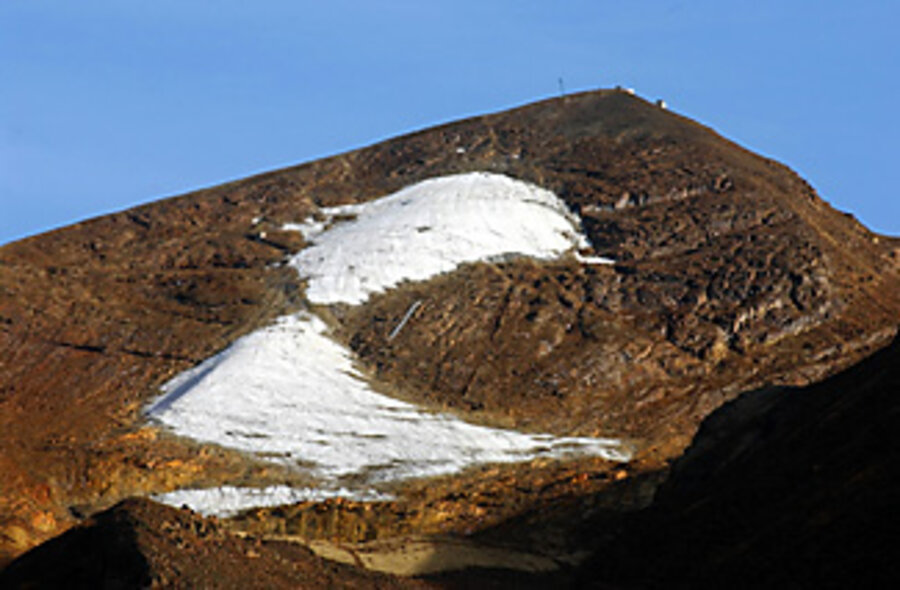Tropical glaciers slowly vanish
Loading...
| Cuzco, Peru
Each Saturday Delia Cascamayta hops on a bus to the colorful produce market in Cuzco, Peru. There she sells the bananas, yucca, potatoes, and oranges that she grows on a 25-acre patch in the Sacred Valley, named by the ancient Incas for its fertile soil.
But as one of several farmers dependent on river water that originates from melting glaciers here in Peru, her feelings about her future are far less bright than the intense hues of her fruit display.
"What's going to happen if the snow and water disappear?" she asks.
For decades, scientists have been warning that glaciers in Africa, Asia, and here in Latin America – particularly Peru – are melting. Last year, the United Nations' Intergovernmental Panel on Climate Change (IPCC) issued a report concluding that rising global temperatures could melt Latin America's glaciers within 15 years.
Rural residents across the Andes Mountains just now are catching up with the science that has long predicted that their lifestyles must change. "They are depending on water that comes from the Andes for almost every activity," says Edmundo de Alba, a Mexican scientist who sits on the panel that published the second of the UN's four IPCC reports last year.
Glaciers have been disappearing throughout Bolivia, Colombia, Ecuador, and Peru, but the impact is felt hardest in Peru, which is home to 70 percent of the world's tropical glaciers.
In Huallaccocha, near Cuzco, residents depend on water from a nearby spring that fills with rainwater. When it doesn't rain, they have no other alternatives.
Zozima Escobedo looks up at the blue sky and shakes her head: Her family couldn't grow corn this season, she says, because water levels were too low.
But Patrick Michaels, a senior fellow at the free-market Cato Institute, a think tank in the United States, says the IPCC is too alarmist given that humans can take action to counter the trends. "It underestimates the human capability of adaptation," he says.
Julio Cano, who lives in the Sacred Valley and grows pineapples and oranges, says he believes adaptation is possible. River water now is plentiful, and if levels go down, his community will find a way to conserve water, he says. "We aren't worried."
For others, change already looms over daily life. In Bolivia, Angelo Martinez points toward Chacaltaya, Bolivia's only ski resort, riddled with exposed rock. Five years ago, he says, that view would have been covered in snow.
These days Mr. Martinez carries a snowboard up the side of the Chacaltaya glacier to the only patch of snow still skiable. A member of the Andean Ski Club, he wonders just how much longer the nearly 70-year-old club will exist. "There isn't much we can do," he says.





